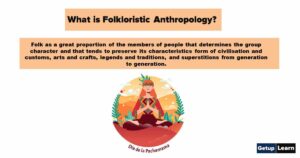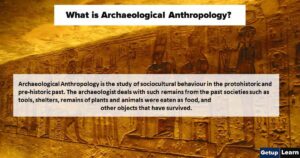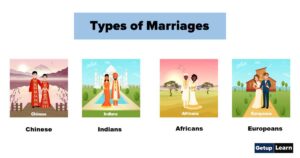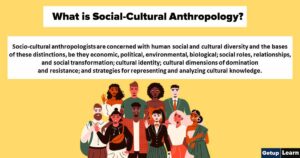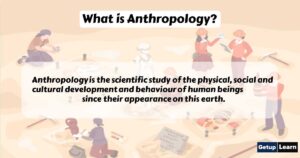Table of Contents
What is Linguistic Anthropology?
Linguistic anthropology is an interdisciplinary field dedicated to the study of language from an anthropological perspective. That means, over the years, linguistic anthropologists have regarded language as a sophisticated sign system that contributes to the constitution of society and the reproduction of specific cultural practices.

Table of Contents
In addition to being a powerful tool for exchanging information, language has been shown to play a crucial role in the classification of experience, the identification of people, things, emotions, and ideas, the recounting of the past, and the imagining of the future that is so critical for joint activities and problem-solving.
Linguistics Language
Philosophical reflection has brought about the awareness that language is used in a variety of ways. Ludwig Wittgenstein in his Philosophical Investigations points out many uses of language such as describing objects, reporting an event, expressing one’s speculations about an event, making up a story, creating and telling a joke, translating from one language to another, asking, greeting, cursing, giving orders and praying.
This wide variety of functions that language performs in human communication can be brought together under four main categories: the informative, the expressive, the directive, and the performative. When language does more than one of these, as is usually the case in discourse, we can speak of a fifth function, the multiple functions.

Main Functions of Language

Informative
When language is used to describe the world or to reason about it, then it serves the informative function. Ordinarily, this is done through formulating propositions (sentences) to affirm or deny something about reality. For example, ‘Today is a bright day,’ or ‘It is not cold today.
The best example of informative discourse is the language of empirical sciences, which is characterized by clarity, precision, and objectivity. With regard to propositions, one may try to determine whether they are true or false. For example, if one says that it is a bright day, we can check and verify whether it is really so.
Expressive
Language serves the expressive function whenever it is used to give vent to (to express) or to arouse feelings, emotions and attitudes. Thus one may express joy and appreciation by shouting, “Well done!”; disappointment by saying, “Oh, how very unfortunate!” The poet expresses complex and concentrated emotions through a poem.
Religious persons may express their feelings of wonder and awe at the mystery of the universe by reciting the Gayatri Mantra, the Lord’s Prayer, the Fatihah or any other prayer. In all these cases language is used not to communicate information but to communicate (express) one’s feelings, emotions or attitudes.
Expressive discourse is used both to express the speaker’s feelings and emotions and also to evoke certain feelings in the listener. Expressive discourse as expressive is neither true nor false. It just expresses the emotion or feeling. One may try to determine whether it is sincere on insincere, valuable, or useless.
Directive
Language serves the directive function when it is used to cause or prevent certain actions. The clearest examples of this are commands and requests. When the mother tells the child to stop playing and start studying, the intention is not to communicate any information or to evoke any particular emotion, but to get the child to study.
When the passenger tells the ticket-seller ‘two tickets to Delhi,’ language is being used directly, to produce action. So too, questions can be considered as directive discourse when, as is ordinarily the case, they are posed to get answers.
Directive discourse is also neither true nor false. A command such as ‘shut the door’ cannot be true or false in any real sense. Such commands can be reasonable (if the door is open) or unreasonable (if the door is closed); proper (if it is very cold and closing may help to keep the room warm) or improper (if it is very hot inside); but not true or false.
Performative
A performative utterance is one which, when uttered in appropriate circumstances, actually performs the act it appears to report or describe. Thus, when at the end of the marriage ceremony the priest/poojari/ magistrate says, “I now pronounce you husband and wife,” the man and the woman really become husband and wife.
In the same way, when at an inaugural function the president says, “I now declare the meeting open,” the meeting really begins. Other examples are: “I congratulate you…; I apologize for …; etc.
Multiple Functions
Except in occasional cases, in ordinary communication, people make use of all the different functions of language. Thus a religious instruction, which may predominantly be directive, may express and evoke sentiments and include some information.
And a scientific treatise, essentially informative, may express something of the writer’s own enthusiasm and at least an indirect invitation to the reader to verify for himself/herself the conclusions arrived at. The ceremonial use of language (phrases of greeting; solemn language in religious services) is a mixture of expressive and directive discourse.
For example, greetings at social gatherings express and evoke goodwill and sociability. The solemn language of a marriage ceremony expresses the solemnity of the occasion (expressive function) as well as impress upon the couple the duty and obligation to truly live their new roles as husband and wife (directive function).
Properties of Language
We have mentioned that various animals use sounds (phone) that indicate different meanings. But in human language, specific sound does not have any meaning. Rather it is the coordination of different sounds that makes a meaningful word or sentence.

Phonemes
Every human language has between 12 to 60 sound (phone) units. These sound units are called Phonemes. The term is derived from the Greek word ‘phone’ means sound. Thus, the sound pattern of a language is one of its features. Phoneme is a unit of sound that distinguishes meaning in a particular language.
‘English’ has 26 letters but more than 40 significant sounds, the multiple combinations of which can change the meaning of a word. For example in English, the difference between ‘bit’ and ‘pit’ is distinguished by the sound difference or phonemic difference between /b/ and /p/, and thereby brings out a change in the meaning.
The study of sound patterns in the language is done under a branch of study called Phonetics/Phonology. It is the systematic identification and description of the distinctive sounds of a language.
Morpheme
Usually, the phonemes are combined with other phonemes to form a meaningful set of sounds. Often, these meaningful set of sounds makes up what we call words. Words may be composed of a number of smaller meaningful units. This combination of meaningful sounds is called Morpheme.
Thus, it is the arrangement of phonemes that makes a morpheme. It is Morphology that studies about the morphemes in a language. People do not usually pause between words when they speak. If we did not know our language, a sentence would seem like a continuous stream of sounds. We separate one word from another only when we write it.
A word is only an arbitrary sequence of sounds that has a meaning. We would not ‘hear’ words as separate units, if do not know the particular language.
Syntax
As language is an open system, we can make meaningful sounds that we heard earlier. But in every language there are certain rules for making phrases and sentences. These rules are termed syntax. These rules determine whether a subject is to be before or after a verb or an object follows a verb etc.
We generally learn these rules from schools. But children know many of them before going to school.
Semantics
Semantics is the study of the meanings of symbols, words, phrases and sentences of a language. Linguistic anthropologists focus on the meaning of language as it is related to beliefs and patterns of thoughts in different societies. Separate area has evolved to study about meanings of concepts and terms, like kinship terms and other cultural phenomena.
This special field is known as Ethno-Semantics. Ethno-semantics is very much related to, if not similar to Cognitive Anthropology.
Linguistic Culture
Culture is a term that is used in at least three different senses: elitarian, pedagogical and anthropological. In the elitarian sense, culture refers to a great amount of knowledge. Anyone with vast knowledge in any field (physics, chemistry, philosophy) can be said to be cultured.
In the pedagogical sense, culture signifies refinement and elegance attained through education and formation. In this sense, we can say that someone is a cultured person.
Culture distinguishes one human group from another. At the same time cultures are very porous, constantly evolving, open to influences from outside and inside in unpredictable ways, and liable to be divided into subcultures. While individuals are shaped by the culture they are not prisoners of culture and can influence, react against and contribute to the development of the culture in which they are.
Culture is not something accidental for human beings. It is a constitutive element of human essence, makes up part of the nature of human beings. Culture distinguishes human beings from animals as much as do reason, will and language.
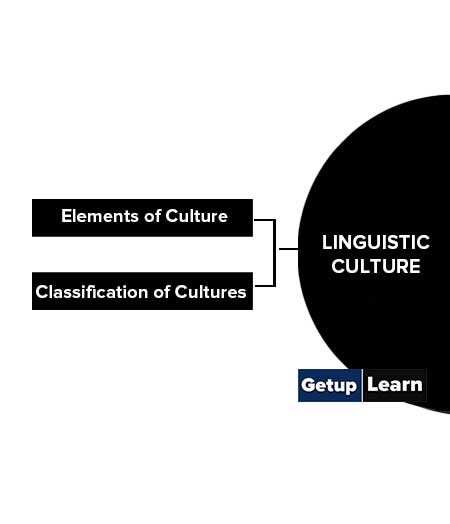
Elements of Culture
The principal elements that constitute culture are language, techniques, customs and values:
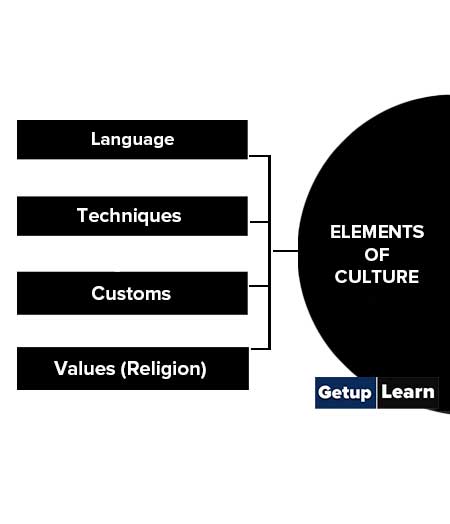
Language
Language is perhaps the most important element or part of the culture. Language (at least the mother tongue) is acquired culturally, that is through the society to which one belongs. While it is true that language is transmitted culturally, it is equally true that culture as a whole is transmitted very largely through language.
Through the use of language, skills, techniques, products and modes of social conduct can be explained and the result of anyone’s study, research and inventiveness can be made available to others.
Techniques
Techniques refer to the procedures used by humans to produce results that are useful. Every society develops its own techniques (methods, tools) for various types of activities. Thus for example, for procuring food different cultures have developed hunting, fishing, agriculture, the herding of cattle, etc.
Even though many of these activities are common to different cultures, the particular way in which each culture carries them out will be different. Thus while some people use the milk of cows others use that of buffaloes. While some still use bows, arrows and spears for hunting, others use guns.
It goes without saying that the development of techniques and scientific progress go together.
Customs
Each culture gives rise to its own customs with regard to almost everything; food, clothing, care for children, concern for the aged, initiation into various stages of life (puberty, marriage), religious beliefs, social, political, and economic organization, etc.
More than anything else it is the customs that give expression to the affective life of a society. The customs manifest whether the society as a whole is violent, arrogant, tolerant, friendly, respectful, chaste, lustful, sincere, faithless, etc. In this sense, we may say that customs reveal the heart of the people.
Values (Religion)
Though the values that different societies uphold may be different there is no society that does not uphold any values. The values upheld by a culture find an explicit expression in religion, in law and in morals. They find an implicit enunciation in techniques, politics and economics.
Values give unity, consistency and cohesiveness to culture. Because of the importance of religion (values) in culture, some hold that religion is the heart of culture.
Classification of Cultures
Depending on the criteria (e.g. literacy, promotion of religion) being used, anthropologists, philosophers and historians have classified cultures differently. We shall enumerate a few of them.
- Preliterate and Literate Cultures
- Peasant and Citizen Cultures
- Popular and Official Cultures
- Scientific and Humanistic Cultures
- Secular and Religious Cultures
- Material and Ideological Cultures
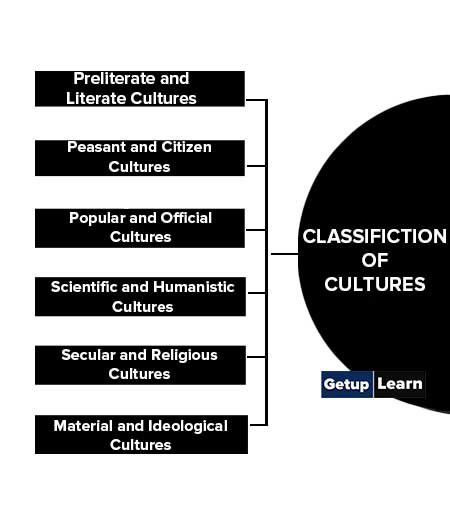
Preliterate and Literate Cultures
Preliterate cultures are those which lack a written script and literate cultures are those which have one. Studies have shown that preliterate cultures are not necessarily inferior to or older than literate cultures. Hence it would be wrong to apply adjectives like ‘primitive’ to preliterate cultures.
Peasant and Citizen Cultures
Peasant culture is the one which develops in the villages, in essentially rural settings while citizen culture is that which develops in great cities.
Popular and Official Cultures
Popular culture is characterized by simplicity, spontaneity, sentiment and imagination whereas the official culture makes everything subject to the control of reason with little room for sentiment and fantasy. Official culture is less rich in myths, rites, symbols and less favourable to popular religious manifestations.
It is to be noted that at times, the same people who behave normally according to the rules of the official culture act also according to popular culture and vice versa.
Scientific and Humanistic Cultures
Scientific culture is one that gives preference in studies to scientific disciplines like physics, chemistry, mathematics, medicine and astronomy. Humanistic cultures give priority to humanities like literature, art, history and philosophy. It would make humanity poorer if we were to disregard either the scientific disciplines or the humanities.
While science can enrich us with better things, it is humanities that tell us what is right and wrong and how to use things in such a way as to promote our integral wellbeing.
Secular and Religious Cultures
Secular culture is one that keeps religion out of state legislation, civil code, political decisions, scholastic education, etc. Religious culture includes religion as an essential part of all aspects of socio-political life. When we say that India is a secular country it does not mean that Indians have no regard for religion or religion is not important for the Indians.
It only means that the State (country), by its Constitutions, does not favour and propagate any one religion as the official religion of the country. In Saudi Arabia, for example, Islam is the official religion. In the USA, most people are Christians but there is a strict separation between the State and religion.
Material and Ideological Cultures
Material culture refers to the economic structure of society which may be also considered as the base structure of society. Ideological culture refers to the superstructure made up of politics, art, religion, philosophy, etc. The Marxist philosophers consider material culture as primary for human existence and ideological culture as only secondary.
However, because the human being is an intrinsic union of both matter and spirit, to give primacy to the material is to have a lopsided understanding of human existence. We have enumerated different ways in which cultures have been classified. In as much as they remain on the descriptive and scientific level, they are helpful for understanding the way human beings live and behave.
However, if these classifications are used in a valuative sense, that is, to attribute superiority or inferiority to any culture, they can be dangerous leading to “unjustified discrimination, arbitrary preferences and injurious conflicts” (Mondin, Philosophical Anthropology, p. 169).
Features of Linguistic Communication
These are some basic features of linguistic communication given below:

Productivity
Human languages are basically flexible and creative. Even small children can create sentences never heard before. We can express different thoughts, meanings and experiences in different ways. On the other hand, the sounds of animal communication have few variations and are least susceptible to modification.
Human languages have the ability to communicate many messages effectively. To communicate about a dangerous situation, a gibbon can make a particular sound. But to express that the situation is more dangerous, the only option for it is to repeat the same sound several times in greater volume. But the capacity of human language for productivity makes it more efficient.
Displacement
Field studies and laboratory experiments have proved that the meaning of a sound of a non-human animal is closely related to the specific type of stimulus. Thus, a growl or scream of a chimpanzee will not happen without a threat. Similarly, parrots can learn to imitate a variety of words. But they cannot substitute or displace one word for another.
The capacity for displacement helps us to communicate with one another using highly abstract concepts. A chimpanzee will not be able to communicate that “a tiger is coming tonight” or “a tiger attacked yesterday”. Instead, it can only express anything experienced at the present time.
But humans can communicate about a situation that happened in the past and that is likely to occur in the future. This ability of human language is called displacement. Among humans, the languages use displaced domains including reference to people and events that might have never existed at all in the past or would never exist in the future.
Arbitrariness
Words are not required to have any connection with the objects or abstract symbols they represent. In English, we say one, two, three… to refer to the numbers. Whereas, in Hindi, we use Ek, do, then … to denote them. So there are no inherently ‘correct’ words to denote the numbers. Thus, meanings are assigned to different words arbitrarily.
We have found that in language, we assign symbols or meanings to objects and activities to convey messages. A consensus on the meaning of the signs and symbols used in the language is a prerequisite for effective communication. Thus, the study of language requires the examination of signs and symbols.
FAQs about Linguistic Anthropology
What are the 5 functions of language?
These are the 5 functions of language:
1. Informative
2. Expressive
3. Directive
4. Performative
5. Multiple Functions.
What are the 4 properties of language?
The following are the 4 properties of language:
1. Phonemes
2. Morpheme
3. Syntax
4. Semantics
What are the elements of culture?
The following are the elements of culture:
1. Language
2. Techniques
3. Customs
4. Values (Religion).
What is the classification of cultures?
The following is the classification of cultures:
1. Preliterate and Literate Cultures
2. Peasant and Citizen Cultures
3. Popular and Official Cultures
4. Scientific and Humanistic Cultures
5. Secular and Religious Cultures
6. Material and Ideological Cultures.
What are the features of linguistic communication?
The following are the features of linguistic communication:
1. Productivity
2. Displacement
3. Arbitrariness.
YOU MIGHT ALSO LIKE
- What is Anthropology?
- Branches of Anthropology
- What is Social Anthropology?
- Scope of Social Anthropology
- Nature of Social Anthropology
- What is Social Cultural Anthropology?
- Theories of Sociocultural Anthropology
- What are Archaeological Sites?
- Types of Archaeological Sites
- What is Linguistic Anthropology?
- What is Marriage?
- Types of Marriage
- What is Family?
- Types of Family in Sociology
- Functions of the Family
- Folk literature
- What is Biological Anthropology?
- Biological Anthropology Fields of Study
- What is Social Anthropology?
- Definition of Social Anthropology
- Scope of Social Anthropology
- Nature of Social Anthropology
- What is archaeology?
- What is Archaeological Anthropology?
- Process of Archaeology
- Types of Archaeology Sites
- Linguistics Language
- Linguistic Culture
- Types of Marriages
- What is Kinship?
- Types of Kinship Groups
- What is Folkloristic Anthropology?
What is the main focus of linguistic anthropology?
Linguistic anthropology is an interdisciplinary field dedicated to the study of language from an anthropological perspective.
What do you mean by linguistic anthropology?
The branch of anthropology that studies human languages is called Linguistic Anthropology. The branch of anthropology we will talk about lastly is linguistic anthropology. Linguistic anthropology is an interdisciplinary science in anthropology. It deals with the study of language and how it can be viewed as part of the cultural reality in human society.
What is linguistic in simple words?
The subject acknowledges language as an accomplishment that furthers human social behaviour and activities. Linguistic anthropology as an interdisciplinary subject works hand in hand with anthropological linguistics, ethnolinguistics, and socio-linguistics.




